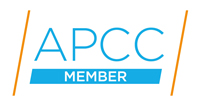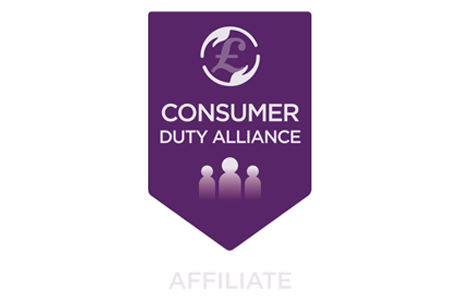Your Business Matters

Richard Howes
16 October 2024Given the pressure advisers are under from an income perspective in today’s market, their answer - and I’m guilty here of simplifying their message - was to get them to sell more… Protection.
And why wouldn’t they? It’s a laudable thing to do, after all most if not all clients could and would benefit from protecting themselves and their families. But it really got me thinking, is that a credible business approach to a situation that faces all business owners, regardless of their industry, in other words sales are down, you can’t influence or do more in your prime market so you either cut costs to match that falling income, or go and find a subsidiary product and sell it to make up for your shortfall?
But if that was the case, wouldn’t advisers have done this before, after all it’s the old adage in our industry, when mortgage sales fall, protection activity goes up, and when the mortgage market booms protection sales go down. I do need to caveat this, in that if mortgage sales are high, there is typically and overall a greater level of protection sales. It’s the fact that advisers with less mortgage enquiries decide then, but only then, is the time to pursue protection sales.
I do believe, however, that advisers are a bit smarter than this and already understand the synergy between mortgages and protection, and in the majority of cases, if they don’t, are they likely to now? Whether that’s because of education, regulation in the form of Consumer Duty, there can’t be many advisers left that have a light bulb moment when the market is quiet and see protection as the answer to their business’ income issues!
It's been well-documented by Paradigm’s CEO Bob Hunt about the income pressures advisers are under and many of the reasons for this, and if (as is likely) it remains so in the short to medium term, what can business owners do to affect a strategy that means income can stabilise or rise without resorting to the need to “sell” something that has been tried, bought or not?
The answer has to lie in cost and efficiency savings within the business; whether that be in improved technology, systems, working practices, greater (or lesser) outsourcing, referral and professional lead generation, reviewing fee structures, premises usage – where much has changed post-Covid, or similar; clearly some things have to change.
By using mortgage software and tools to streamline your processes, you can make it easier to manage leads, manage your pipeline and close out potential deals. Streamlining processes can reduce costs and save time, allowing you to focus on what matters most. Which in turn can lead to an improved client experience and a more efficient operation can lead to faster service and higher satisfaction.
How do you know your technology is fit for purpose? You could take the Paradigm technology MOT, built in conjunction with Twenty7Tec, which looks at what your technology does now: is it safe, is the data owned by you, and through a series of questions established whether your technology passes its MOT. If it does not, then you can call on Paradigm to help you ensure it passes after some changes!
Another obvious area is to expand your network, for example by building relationships with wealth management advisers, accountants (it always amazes me how an accountant for a business does not supply introductions to that business), solicitors, builders, Citizens Advice and local businesses. This last point is important, offering a facility to local firms to review their employees’ mortgage provision by way of a weekly finance surgery can lead to new clients and good levels of new business.
Improve your marketing by utilising social media, with informative content through blogs, videos, and email campaigns to reach potential clients. You can highlight your success stories with client testimonials and re-visit your website frequently to see what needs to be updated and changed. All this can be done cheaply by engaging with tech students who would be happy to help given it helps them with their studies, thoughts and practical applications for their coursework, and students are (in the main) cheap!
Of course, you will offer exceptional service, but, given this do you automatically look for 3 referrals per client? As we all know satisfied clients are more likely to refer you to others.
Maybe ironically, one of the reasons why income is under pressure is the need to regularly follow up with past clients to check in and remind them of your services, or even meet obligations, which can lead to repeat business or referrals, but it’s got to be at the right cost to the business. Again, technology can be used here, where a focus for one part of the business is on new clients where another using technology as your partner, enables you to monitor existing clients on an on-going basis which keeps them informed, engaged and reassured.
As an example, by use of a third party platform, it’s possible to continuously track your clients' mortgage product and compare that against thousands of mortgage products available in the market, taking account of the growth in property value and LTV change, and the cost of any ERC. This ensures that clients are always on the most suitable deal without the hassle of constant manual checks.
Should you identify areas that need improvement in your business, it may be in the first instance you are overwhelmed as there may be much to do, therefore streamlining may be more beneficial. You could start by streamlining certain aspects while gradually introducing new areas, introducers or digital propositions, thus managing growth without sacrificing quality.
Talk to clients about their needs which is a great way of finding out realities, however uncomfortable they maybe for your business and ego(!). If they express interest in more product areas, that could guide your decision. Indeed, should you be dealing with your existing client bank, can it and will it offer repeat income opportunities? This is never more obvious than in the wealth management side of financial planning where an “advice gap” is well known against the cost of advice, which doesn’t always measure against the clients size of investment to make the provision of advice worthwhile for the adviser.
If you accept that each firm and client is different, a full annual review (conducted thoroughly and using cashflow modelling) by a medium-sized financial planning firm costs between £1,750 and £2,250 per client, according to data from advice support services provider Melo.
If you break this down into the costs for FCA fees, FOS levies, PI costs and central management costs plus office, adviser, administration and research costs you can easily see how this figure is arrived at. But do you do that in your business to measure your profitability, and could you, if not perhaps a third party like Paradigm, help? Ultimately, a balanced approach that incorporates both strategies may be the best path forward.
Getting higher profit margins is achievable by increasing sales in areas like protection, but far better that combined with reducing overheads and improved efficiencies. . If this article stimulates interest why not find your Paradigm Business Development Director who can advise, guide and inform in these most important of areas – find their details here.


